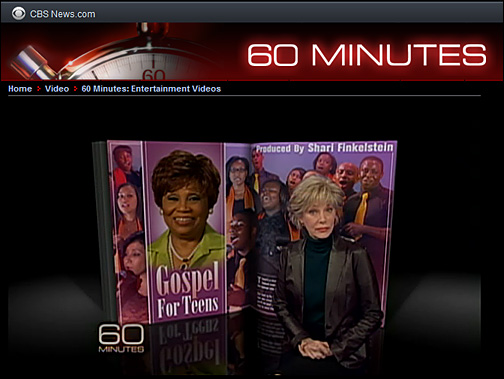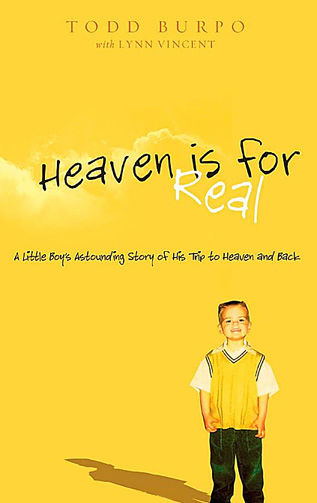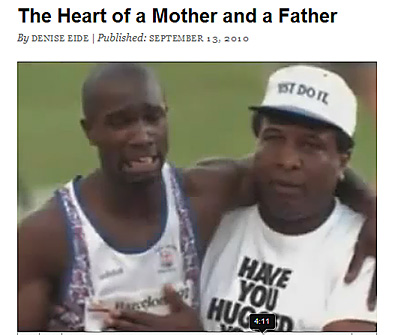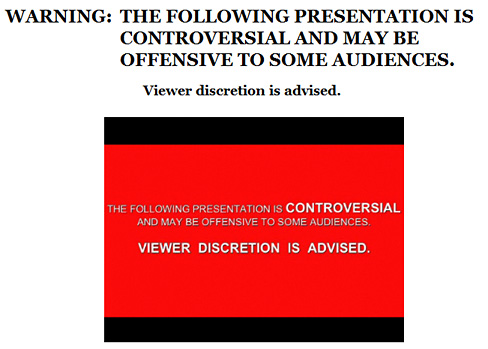Kalamazoo Christian lowers tuition as part of remake to boost enrollment — by mlive.com by Julie Mack
You see, at just the right time, when we were still powerless, Christ died for the ungodly. Very rarely will anyone die for a righteous person, though for a good person someone might possibly dare to die. But God demonstrates his own love for us in this: While we were still sinners, Christ died for us.
“He himself bore our sins” in his body on the cross, so that we might die to sins and live for righteousness; “by his wounds [we] have been healed.”
The Son is the radiance of God’s glory and the exact representation of his being, sustaining all things by his powerful word. After He had provided purification for sins, He sat down at the right hand of the Majesty in heaven.
Why Jesus’ parables stand out — from the BibleGateway.com
Excerpt:
The NT Blog came across an interesting short video of two scholars discussing the significance and distinctiveness of Jesus’ parables…
It’s a nice introduction to Jesus’ teaching style…
A Reflection of Christ –– from Insight for Today by Charles R. Swindoll
Excerpt regarding the commentary on Genesis 43:33-34
Joseph’s life offers us a magnificent portrayal of the grace of God as He came to our rescue in the Person of His Son, Jesus. So many come to Him, like Joseph’s guilty brothers, feeling the distance and fearing the worst from God, only to have Him demonstrate incredible generosity and mercy. Instead of being blamed, we are forgiven. Instead of feeling guilty, we are freed. And instead of experiencing punishment, which we certainly deserve, we are seated at His table and served more than we can ever take in.
For some, it’s too unreal. So we desperately plead our case, only to have Him speak kindly to us—promising us peace in our own language. We then try to fend off His anger by bargaining with Him, thinking our hard work and sincere efforts will pay Him back for all those evil past deeds we’re guilty of. But to our astonishment, He never even considered our attempts important enough to mention. What we had in mind was earning just enough to silence our guilt, but what He had in mind was overwhelming us with such an abundance we’d realize we can never, ever repay.
What a beautiful picture of Christ at the cross, bearing the sins we committed, forgiving us in the process. Isn’t such grace amazing? The One who was rejected is the same One who goes the limit to get us reunited with Him.
From DSC:
I “happened to see” this book at Barnes & Nobles the other day, and I started to read it. Immediately, it got my attention and I ended up buying it. It has brought tears to my eyes on several occasions and for different reasons. I highly recommend that you check this book out. Nothing in it surprised me — but rather, it confirmed/affirmed many of my beliefs.
Description from http://heavenisforreal.com/:
Heaven Is for Real is the true story of the four-year old son of a small town Nebraska pastor who during emergency surgery slips from consciousness and enters heaven. He survives and begins talking about being able to look down and see the doctor operating and his dad praying in the waiting room. The family didn’t know what to believe but soon the evidence was clear.
Colton said he met his miscarried sister, whom no one had told him about, and his great grandfather who died 30 years before Colton was born, then shared impossible-to-know details about each. He describes the horse that only Jesus could ride, about how “reaaally big” God and his chair are, and how the Holy Spirit “shoots down power” from heaven to help us.
Told by the father, but often in Colton’s own words, the disarmingly simple message is heaven is a real place, Jesus really loves children, and be ready, there is a coming last battle.
From DSC:
Perhaps you’ve seen this…but I’m reminded that our lives are but a vapor when I read this one. I’m also reminded of a person’s dignity and the specialness of a person, a life, a soul.
When an old man died in the geriatric ward of a nursing home in Grass Valley, CA (USA). it was believed that he had nothing left of any value.
Later, when the nurses were going through his meager possessions, they found this poem. Its quality and content so impressed the staff that copies were made and distributed to every nurse in the hospital.
One nurse took her copy to Missouri.
The old man’s sole bequest to posterity has since appeared in the Christmas edition of the News Magazine of the St. Louis Association for Mental Health. A slide presentation has also been made based on his simple, but eloquent, poem.
And this little old man, with nothing left to give to the world, is now the author of this ‘anonymous’ poem winging across the Internet.
Crabby Old Man…
What do you see nurses? . . … . . What do you see?
What are you thinking . . . . . when you’re looking at me?
A crabby old man . .. . . . not very wise,
Uncertain of habit … . . . . with faraway eyes?
Who dribbles his food . . . .. . and makes no reply.
When you say in a loud voice . . . . . ‘I do wish you’d try!’
Who seems not to notice .. .. . … . the things that you do.
And forever is losing . . . . . A sock or shoe?
Who, resisting or not . . . . . lets you do as you will,
With bathing and feeding . .. . .. . The long day to fill?
Is that what you’re thinking? . … . . . Is that what you see?
Then open your eyes, nurse . . . . . you’re not looking at me.
I’ll tell you who I am. . . . … . As I sit here so still,
As I do at your bidding, . . . . . as I eat at your will.
I’m a small child of Ten . .. . . .. with a father and mother,
Brothers and sisters . . . .. … who love one another.
A young boy of Sixteen . . . .. with wings on his feet.
Dreaming that soon now . . . . . a lover he’ll meet.
A groom soon at Twenty . . . . .. my heart gives a leap.
Remembering, the vows . . . . . that I promised to keep.
At Twenty-Five, now . . . .. . I have young of my own.
Who need me to guide . . . . . And a secure happy home.
A man of Thirty . . . . . My young now grown fast,
Bound to each other .. . . . . With ties that should last.
At Forty, my young sons . . … . . have grown and are gone,
But my woman’s beside me . . . . . to see I don’t mourn.
At Fifty, once more, babies play ’round my knee,
Again, we know children . .. . . . My loved one and me.
Dark days are upon me . . . . . my wife is now dead.
I look at the future . . . . . shudder with dread.
For my young are all rearing . … . . . young of their own.
And I think of the years .. . . .. . and the love that I’ve known.
I’m now an old man . . . . …. and nature is cruel.
Tis jest to make old age . . . . . look like a fool.
The body, it crumbles . . . . . grace and vigor, depart.
There is now a stone . . . . where I once had a heart.
But inside this old carcass . . . . . a young guy still dwells,
And now and again . . . . . my battered heart swells.
I remember the joys . . . . . I remember the pain.
And I’m loving and living . . . … . life over again.
I think of the years, all too few . . . . . gone too fast.
And accept the stark fact . . . . that nothing can last.
So open your eyes, people . . . … . open and see.
Not a crabby old man . … . . Look closer . .. . see ME!!
Remember this poem when you next meet an older person who you might brush aside without looking at the young soul within. We will all, one day, be there, too!
From DSC:
You probably have already seen this, but it’s a poignant reminder of the power of a heart…of love. It’s remarkable to me that God has a heart like this for us. I need to confess that I often can’t get my arms around that kind of love.
Therefore, as it is written: “Let the one who boasts boast in the Lord.”
From DSC:
On February 24th, I saw this piece at Forbes.com — > USA Inc.: Mary Meeker’s Deep Dive Into The Federal Budget
Excerpt:
“By the standards of any public corporation, USA Inc.’s financials are discouraging,” she writes in an introduction to the report. “True, USA Inc. has many fundamental strengths. On an operating basis (excluding Medicare and Medicaid spending and one-time charges, the federal government’s profit and loss statement is solid, with a 4% median net margin over the last 15 years. But cash flow is deep in the red (by almost $1.3 trillion last year, or ~$11,000 per household) and USA Inc.’s net worth is negative and deteriorating. That net worth figure includes the present value of unfunded entitlement liabilities but not hard-to-value assets such as natural resources, the power to tax or mint currency, or what Treasury calls ‘heritage’ or ’stewardship assets’ like National Parks. Nevertheless, the trends are clear, and critical warning signs are evident in nearly every data point we examine.
…
She points out that Congressional Budget Office data suggests that by 2025 all of the government’s income will go to entitlement spending and interest payments, leaving nothing for any other expenditures.
From DSC:
The day before, I had seen a video mentioned on TV. From the mentioned URL, I checked the majority of it out. It made me ask, “Is this for real!!!???”
Most likely it is just a sales pitch. But the underlying concept of the growing national U.S. debt is not a joke — and, if not reversed, could have a serious affect on global economies.
As I don’t know, I’m seeking input/feedback from any and all economists out there! If what he is saying is even remotely true, the financial aftershocks will be felt throughout the world. Below are my reflections/questions on that potentially-very-important topic/perspective.
.
I’m not sure what I think about a video that I ran across the other day. I’m referring to a video done by Porter Stansbury, founder of Stansberry & Associates Investment Research. I saw the URL posted on a cable TV station, referencing a URL/video at:
- EndOfAmerica2011.com
Note: This video is a long video, running 1:17:41; a transcript of the video is provided here.
While I’m not big on the latter part of the video/piece where he pitches some potential investing solutions and reports, (and, NOTE: I do not mean to endorse any strategy he may be talking about nor is this posting meant to get into investment strategies or advice!)
I studied Economics at Northwestern years ago and several things this gentleman says in this video seemed within reason/feasible. Also, I have heard a variety of economists (here in the United States) through the years voicing their concerns about the enormity of the growing level of federal debt and the amount of our debt being owned by other countries.
(As an aside, people don’t like to hear bad news and we don’t vote the rare politicians into office who actually stand up and tell us what we really need to do to fix whatever mess we were/are in. I’ve noticed that in the world of higher education, many don’t like to hear news of the disruptions already underway either.)
Spiritually speaking, America has pushed the LORD out of the public square for so long, that it wouldn’t surprise me at all to see our nation continue its steep and rapid decline. Throughout history, nations have come and gone…risen and fallen…why should we be any different? (Blessed is the nation whose God is the LORD…Psalm 33:12 — and conversely…)
By way of a quick piece of research I did — this page on their website claims that the total outstanding debt of the U.S. Federal government is $14.131 trillion — which appears to be true:
Questions:
- Is this presentation for real? Are the facts and figures accurate?
- Could these things occur? Are there grounds to his assertions/predictions?
- Have these things happened to nations in the past? If so, under what conditions?
- Would some macroeconomics professor or an international business class review this video and get to the bottom of his arguments and assertions?!?
It’s very real world and students could work to try and pick apart the various arguments/assertions/implications mentioned therein. Prove if this is a scam or not.
David I. Smith
Director, Kuyers Institute for Christian Teaching and Learning
Professor, Department of Germanic and Asian Languages
.
Our efforts to think about teaching and learning in a Christian manner have often been focused on broad philosophical questions and principles, leaving open the task of relating these to the daily work of the teacher. This workshop, to be held at Calvin College and led by David I. Smith, Director of the Kuyers Institute, will explore how a closer examination of the nature of practice can shed light on the calling of the Christian teacher and on what might be Christian about a school or classroom, not merely in terms of conveying Christian ideas but rather in terms of shared practices. Participants will study and discuss recent work on the nature of social practices and of Christian practices. We will focus on how our participation in shared practices relates to formation in the classroom, and how the choice and design of such practices relates to Christian faith.
Further information:
The Kuyers Institute will offer its Teaching as a Christian Practice summer workshop, during July 11-15, 2011, at Calvin College.
The workshop is open to P-12 educators from any subject area and to Christian faculty in higher education (especially, but not limited to, education departments). The participation fee for the workshop is $100; both graduate credit from Calvin College and Michigan SB-CEUs are available at an additional cost. Thanks to a grant from the Valparaiso Project on the Education and Formation of People in Faith, the cost of study materials and lunches during the workshop will be covered, optional graduate credit will be available at a discounted rate, and a limited number of needs-based scholarships (up to $300 each) will be available to defray accommodation and travel costs for out-of-town participants. Attendance will be limited to 20 participants.
The workshop will explore how a closer examination of the nature of practice can shed light on the relationship between faith and learning. Our efforts to think about teaching and learning in a Christian manner have often been focused on broad philosophical questions and principles, leaving open the task of relating these to the daily work of the teacher. This workshop will examine what recent discussions of Christian practices have to do with schools and classrooms: can an exploration of Christian practices help us to discern the calling of the Christian teacher and to articulate what might be Christian about a school or classroom? Together we will explore what it might mean to approach Christian teaching and learning not merely as the conveying of Christian ideas, but as a shared Christian practice. While the workshop will place a strong emphasis on practical application, an interest in thinking broadly about issues of faith and learning is a prerequisite.
Also see:
- Seminars in Christian Scholarship — including the Kuyers Institute fall conference, Education as Formation: Christian Approaches




















